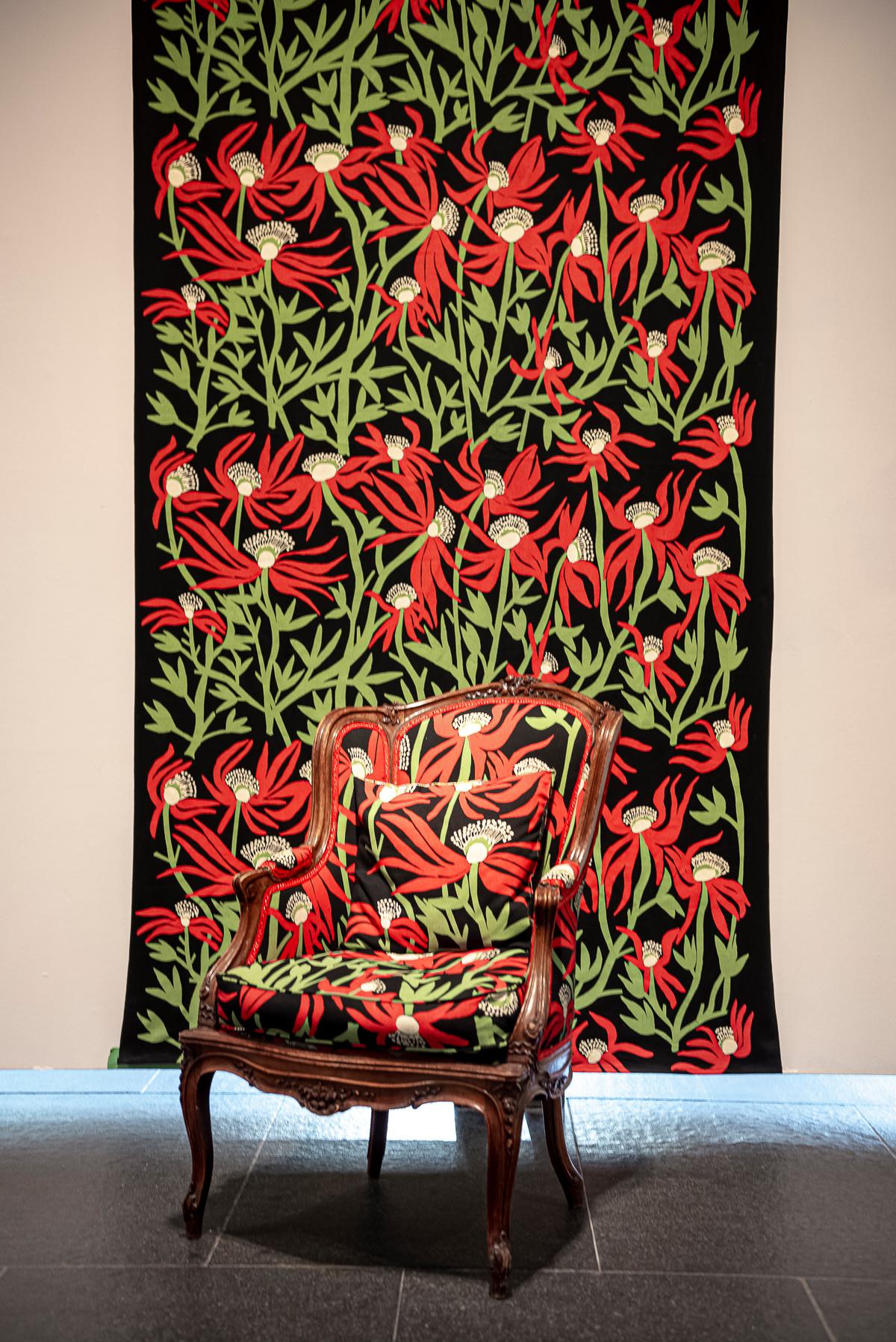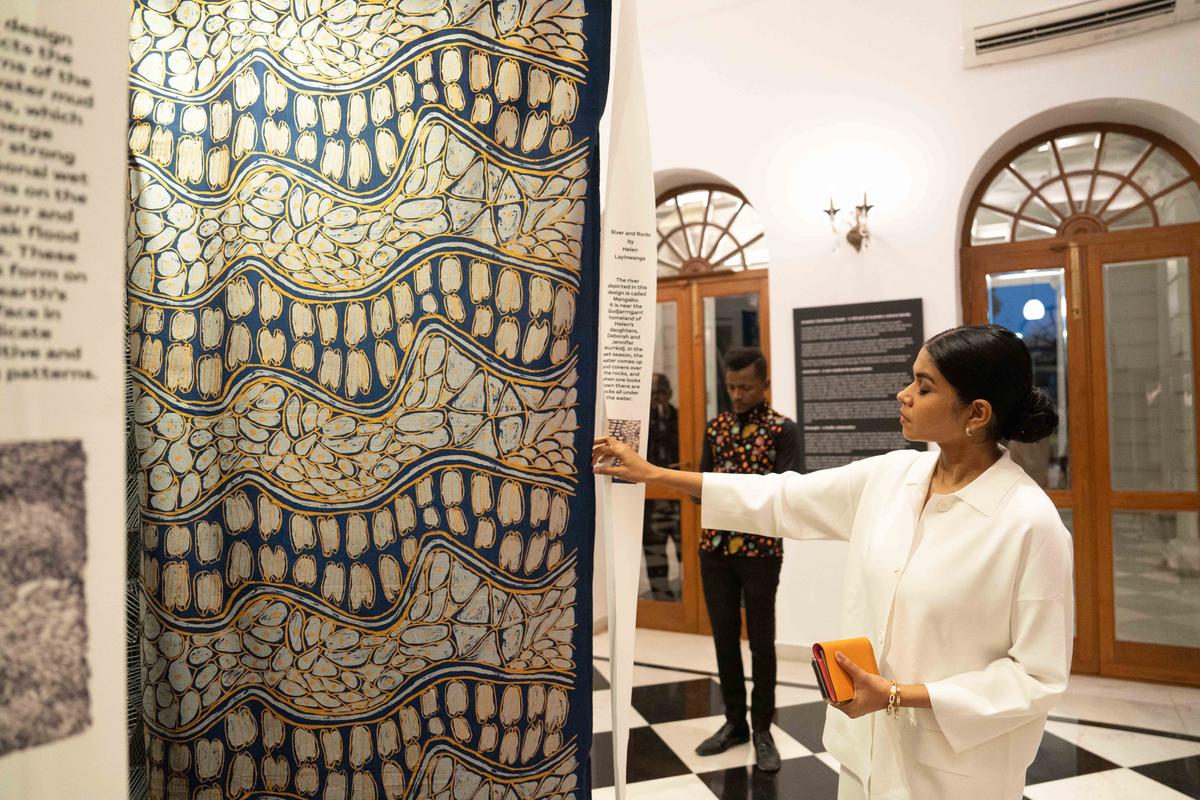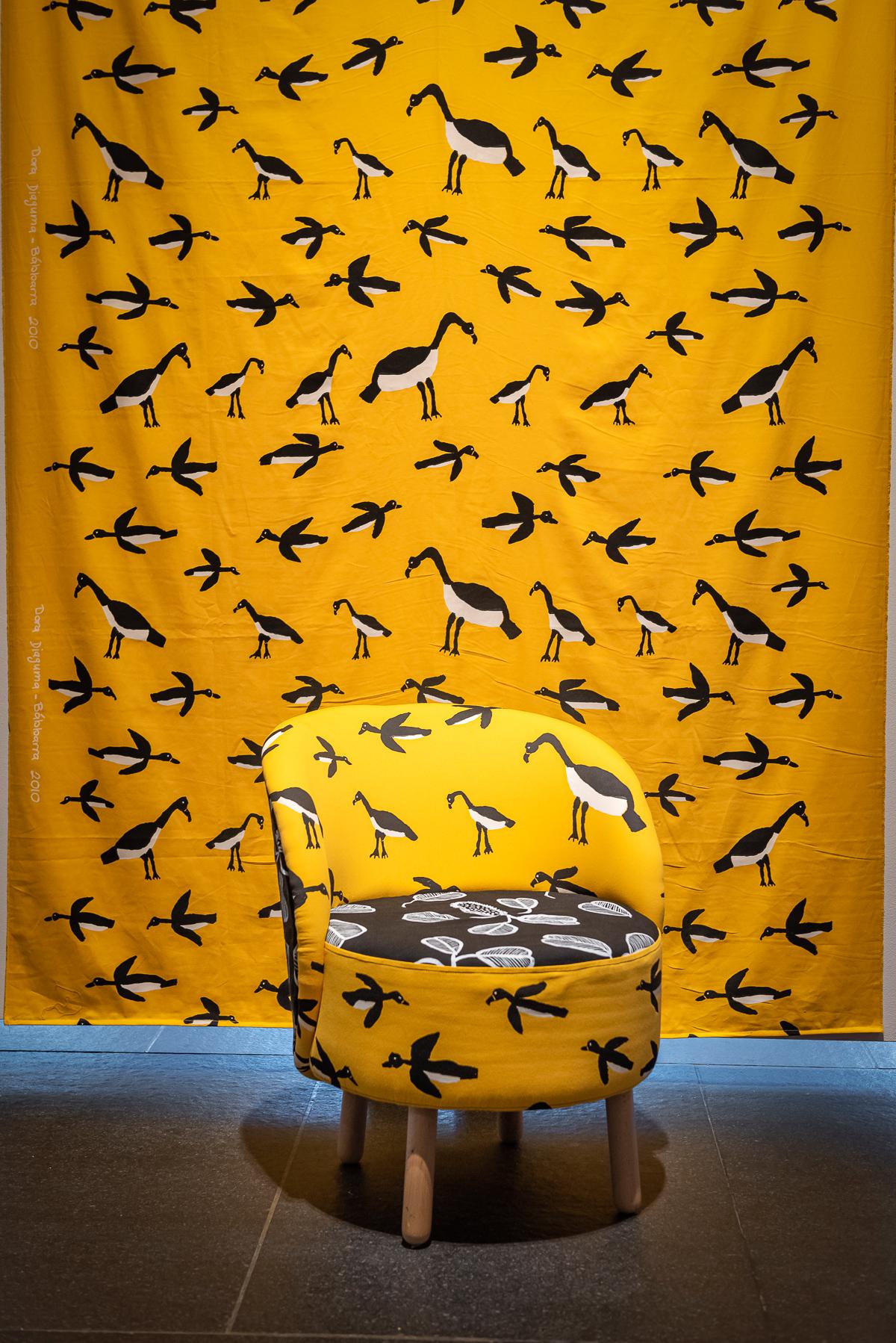Australian Aboriginal textile art on display in Kingsley | Photo Credit: Special Arrangement
Amidst all the neatly stacked kanjivarams at Kingsley, a group of magpie ducks floats on a bright, almost dazzling yellow cloth suspended from ceiling-high spokes. The fabric is one of many brightly colored pieces with abundant and unusual motifs that remain as centerpieces in a building known for its arched windows, checkered floors and colonial character. Chennai is perhaps unfamiliar with the stories behind the pieces, as they come from Australia’s First Nations cultures: Australia’s first peoples, who existed thousands of years before colonisation.
magpie geese or murnubbarr karrollka As they call it, they fly long distances in wet weather, and are characteristic of Kakadu and western Arnhem Land where they are often found. For Dora Daiguma, an Aboriginal artist living in Arnhem, they reflect memories of her land, surroundings and childhood. Suspended adjacent is another piece that carries an earthy red color, dotted by amorphous, rather fibrous shapes—Bah-J by Linda Guruvana. Bah-je translates to hunting bag in Jinang, one of over 250 indigenous languages in Australia.

From Paris Inception | photo credit: Andrew McLeish
The well-displayed installation titled Jarachara is an invitation to subtly assimilate the stories of First Nations cultures, as told through an intimate medium such as cloth. The Jarachara is a distinctive cold wind that blows in the dry season to Arnhem Land in the far north of Australia. It signifies a ‘formal coming together’. The installation consists of 24 screen-printed textiles created by 15 female First Nations artists, all part of the Babbara Women’s Center (founded in 1987) located in Maningrida – a regional community in Australia’s Northern Territory. They are punctuated by a few framed, wood-cut prints done in collaboration with Tharangini Studios in Bengaluru.
beginning
The earliest forms of tribal art were rock carvings and paintings, body paintings and ground designs. Sarah Kirlew, Australian Consul General for South India, says, “There are 60,000-year-old engravings on cave walls in Arnhem Land. Putting art on canvas and board began about 50 years ago. Today Aboriginal art is performed in a wide range of mediums, including textiles like this exhibition.”

From the day of inauguration | Photo Credit: Special Arrangement
Jessica Rosalie Stallenberg of Babbar Designs says that artists from more than 12 language groups from the Maningrada region come together at the center. “These artists design and hand-print unique textiles telling ancestral stories of Arnhem Land country, history and cultures. Many of Babbar’s artists – Susan Marwar, Jennifer Wurkidge, Deborah Wurkidge and Helen Laninwanga – attribute their artistic education to world-renowned artists in their families, including some of Australia’s finest bark painters: James Iyuna, Mary Marabamba and Leena Kurinia . she adds.
Most of the artworks and associated motifs share knowledge about their lives: traditional bush foods, and crops such as chiki yam, long yam, dugong (marine mammal), barramundi (Asian sea bass) and long-necked turtle appear. Jessica continues, ” have been discovered in salt water and freshwater country traditional life medium. Dilli bags and woven fish nets and other items traditionally made by women to collect food and carry children The creation spirits in the stories also include – [that appear in creation stories] such as mimihs, yokyawk (mermaid spirits), jomi (mermaids) and other women’s creation stories specific to the region in Arnhem Land. The designs share plants and animals unique to the region.
Much contemporary First Nations art is based on important ancient stories centered on ‘The Dreamtime’ or ‘The Dreaming’ – the period in which Indigenous peoples believe the world was created, says Sarah. “Dreamtime stories have been handed down through the generations,” she says.

From Paris Inception | photo credit: Andrew McLeish
The aim of bringing this establishment to Chennai is to share cultures that many people are unaware of. “It is important to note that First Nations art is an ever-evolving cultural practice,” concludes Sarah.
As a steady stream of spectators passed through the maze made of fabric on opening day, they often paused to read and reflect on the story that was coming to them. Although the art itself initiates a conversation on colors, textures, motifs and meanings, the context elevates its importance as art created by First Nations, women.
Zarachara can be seen at Kingsley, Spur Tank Road, Chennai till 17th April.